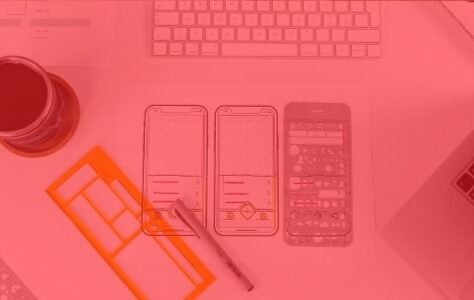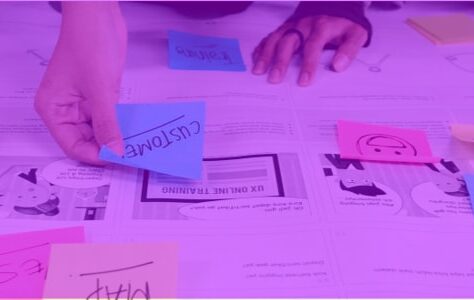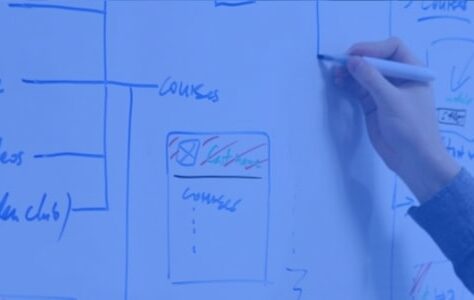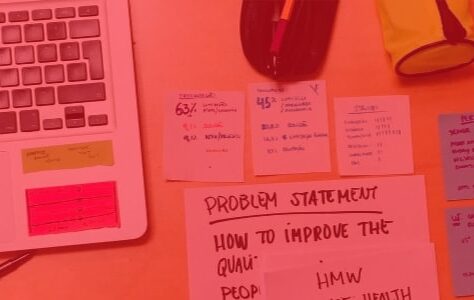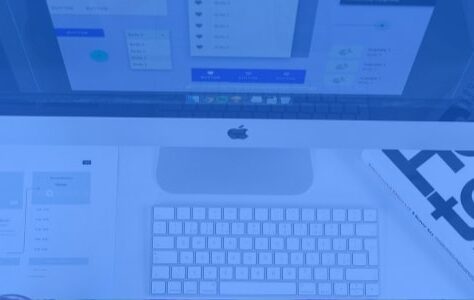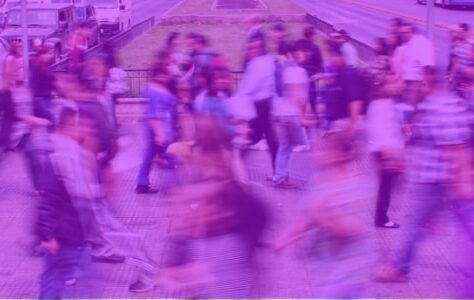An eye tracker, of course!
Eye tracking or eye tracking in English is a technique for recording eye movements. After a personalized calibration, the eye tracker captures the user's gaze and follows it throughout the recording period. In 1908, it was Edmund Huey who made the first eye measuring instrument, thanks to a system of contact lenses. A century after this discovery, here is eye tracking in the digital age, renamed “Eye-tracking”. This technology is gradually opening up to all markets such as medicine, sport, construction, etc.
![]()
The eye-tracker is a device embedded in the computer or independent (for example, glasses) which, once connected to the software, transcribes the movements of the pupil and the gaze of the user.
And user experience in all of that ?
Eye-tracking has revolutionized uses in the digital ecosystem (widely used for e-commerce interfaces, virtual reality). But also for more complex subjects in the Humanities and particularly around autism spectrum disorders, in young children. The varied fields of activity allow unlimited potential, from the sportsman who trains to the interface designer.
The world of augmented reality and virtual reality opens up new horizons. Accompanying the gaze, we can then define the products most observed by the people tested and thus offer services linked to the data collected (targeted advertising, marketing). So many applications that allow, gradually, the evolution of the tools. So what does this tool bring to designers? Does it challenge our UX expertise on web and digital interfaces?
eye tracking in design
The eye-tracker is a tool often used during user tests, to challenge an interface, during A/B testing, or to compare designs. But does it really allow you to rethink an “experience” in its architecture, or rather to accumulate a series of “micro-adjustments” on an interface? For my part, I will share with you some feedback on the use of the eye-tracker in the design process. I had the opportunity to attend user tests with the eye-tracker before and after working on a B2E application.
#1 "Time is money…"
Too long a test with the eye-tracker can tire the user, and falsify some results (staring into space, loss of concentration, etc.). It generally takes about twenty minutes for eye-tracking and twice that for feedback after the test.
#2 "Words are silver, silence is gold"
At a user testing with eye-tracking, designers must specify the brief as much as possible so as not to have to intervene during the recording. Listening to the person giving instructions disrupts the exercise.
TIPS: Prepare an interview guide with a simple and precise scenario.
#3 Let's play !
To consolidate the test, it should always be followed by a think-aloud exercise on the part of the user. the Think Aloud Retrospective (RTA) is an exercise that allows the user to review his test through a video recording and gives him the opportunity to specify his actions and choices during the test. Thanks to these exchanges and the collection of data from the eye-tracker, the designers can then analyze the tests and indicate the first avenues for improvement.
#4 One tool among others
Eye-tracking, compared to a classic user test, gives an indication of people's ability to interact with the interface. If the eyes can define some adjustments and provide some answers, the entire UX methodology should not be based solely on this observation.
We cannot afford to base our user experience on visual data, because eye-tracking still has some shortcomings at different levels.
![]()
What can slow down
Smile, you're being filmed
Because the testers are aware of the presence of a tracker, their behavior is biased, they do not react naturally during the test. This unconscious behavior continues throughout the test, although it decreases with confidence.
TIPS : Put the user at ease by simply explaining the procedures and answering his questions with empathy.
€Y€-Tracking (or “the eyes of the head”)
Using eye-tracking has a cost. Count between 100 and 900 euros for the entry-level, and up to more than 10 euros for the most efficient devices. These are used in the professional environment, particularly in the fields of health, sport and marketing.
Emotion tracking?
At a previous Article, Alexandre presented the intervention of Pierre-Majorique Léger (neuroscience researcher) to TEDxMontreal, highlighting the emotional side, currently absent from eye-tracking devices. This information is valuable for understanding the real meaning of eye movements.
"Seen, I hadn't seen it"
With some eye-tracking models, the setting cannot be done correctly on users with glasses or contact lenses. The eye-tracker recordings only capture the gaze on a point and do not take into account the peripheral vision on the screen. However, a visual element only exists in a set, a button depends above all on the interface it accompanies.
![]()
What we can gain
Augmented reality, virtual reality
If eye-tracking is not yet ready to revolutionize the world of the web, it does have strong growth opportunities in new digital fields such as AR or VR. Based on the vision, these three technologies are destined to converge towards a common future.
Eye Robot
Eye data is of legal interest to the world of machine learning and artificial intelligence, to accelerate robot learning or the speed of task execution. There is even talk of replacing some manual actions through visual language thanks to eye-tracking (ex: gaming, medicine, etc.)
![]()
Eye phones
Samsung's S9 model is equipped with an eye unlock device, which also allows you to browse the internet. These technologies are becoming more and more precise, as is facial recognition on the latest smartphone models, as a “security tool”. On this ARKit demo, we can see the progress of Apple on the subject, we then imagine the next series of Iphones and the new uses that we will be able to make of our smartphones.
TAKE AWAY
Eye-tracking therefore provides real solutions when testing a user experience. However, due to its cost and low maturity, it is not yet fundamental in the development process. This point is even more true when it comes to overall experience. Eye-tracking focuses more particularly on the visual and not on the experience and accessibility. Nevertheless, advances in medicine and sports demonstrate the performance of eye-tracking and its potential for years to come. Also for this reason, I will recommend for designers who would like to obtain an eye-tracker soon to:
- Target the need before buying (and then choose a high-performance model: even if it means spending, you might as well choose quality).
- Understand that this is a tool and not a methodology (it will never replace a classic user test).
- Make returns to manufacturer brands and report the problems encountered (That's UX!)
Ready? Fire, track!
UX-Republic
UX/UI ECO-DESIGN # Paris
SMILE Paris
163 quay of Doctor Dervaux 92600 Asnières-sur-Seine
DESIGN THINKING: CREATING INNOVATION # Belgium
UX-REPUBLIC Belgium
12 avenue de Broqueville - 1150 Woluwe-Saint-Pierre
MANAGING AND MEASURING UX # Paris
SMILE Paris
163 quay of Doctor Dervaux 92600 Asnières-sur-Seine
DESIGN SPRINT: INITIATION & FACILITATION # Paris
SMILE Paris
163 quay of Doctor Dervaux 92600 Asnières-sur-Seine
UX-DESIGN: THE FUNDAMENTALS # Belgium
UX-REPUBLIC Belgium
12 avenue de Broqueville - 1150 Woluwe-Saint-Pierre
GOOGLE ANALYTICS 4 #Paris
SMILE Paris
163 quay of Doctor Dervaux 92600 Asnières-sur-Seine
ACCESSIBLE UX/UI DESIGN # Belgium
UX-REPUBLIC Belgium
12 avenue de Broqueville - 1150 Woluwe-Saint-Pierre
EXPERIENCE MAPPING # Paris
SMILE Paris
163 quay of Doctor Dervaux 92600 Asnières-sur-Seine
USER RESEARCH: LEARNING FROM USERS # Belgium
UX-REPUBLIC Belgium
12 avenue de Broqueville - 1150 Woluwe-Saint-Pierre
